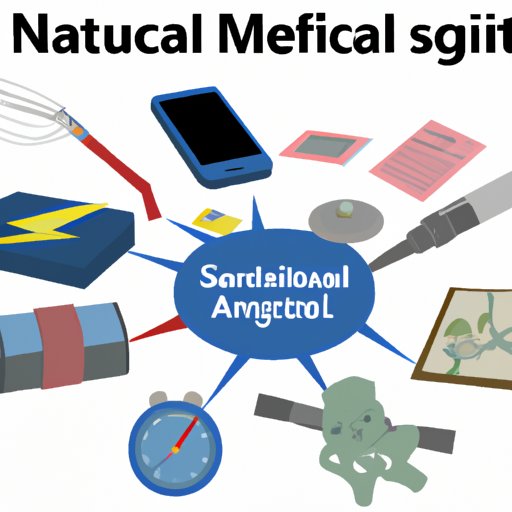
I. Introduction
With increasing tensions between nations and the possibility of nuclear war, the threat of a nuclear attack is more real than ever before. The consequences of such an attack are catastrophic, but with proper preparation and survival strategies, individuals can increase their chances of staying safe. This article aims to provide a comprehensive guide on how to survive a nuclear attack by outlining key steps and strategies to follow.
II. Understanding the Risks
There are two main types of nuclear attacks: a nuclear detonation, or a dirty bomb. Nuclear detonation is caused by an explosive device, while a dirty bomb is a conventional bomb that has radioactive materials attached to it. The consequences of a nuclear attack can range from direct physical harm to long-term health effects. It’s important to understand the consequences so that one can take the necessary precautions.
It’s also crucial to prepare mentally and emotionally for the possibility of a nuclear attack. Panic can be just as dangerous as the attack itself, so staying calm and level-headed is essential. Individuals should educate themselves on the risks and have a plan in place before an attack occurs.
III. Create an Emergency Kit
Having a well-stocked emergency kit can be the difference between life and death in the event of a nuclear attack. The kit should include essential supplies for survival such as water, food, first aid materials, and radiation detection devices. It’s important to regularly check and update the kit since some supplies have an expiration date. The kit should be stored in a cool, dry location, and it should be easily transportable in case of an emergency.
IV. Find a Safe Place
Finding a safe place is critical to surviving a nuclear attack. The ideal place is a fallout shelter or a basement that is located underground, as these provide the best protection against radiation. When choosing a safe place, it’s important to consider factors such as distance from the blast, the size of the room, and the building materials. If building a fallout shelter is not an option, individuals can look for public shelters that are designated by the government.
Preparing the safe place for a possible attack involves adding items such as radiation-absorbing materials, water, and food. It’s also important to seal off the windows and doors with plastic sheets and duct tape to prevent radioactive particles from entering the room.
V. Protect Yourself from Radiation
Understanding radiation and how to protect oneself from it is crucial in the event of a nuclear attack. Radiation can cause damage to cells in the body, leading to various health problems. Protective measures to take during a nuclear attack include seeking shelter underground, wearing protective clothing, and using radiation detectors to track radiation levels. After an attack, individuals must decontaminate themselves and their surroundings to reduce the risk of radiation exposure.
VI. Have a Communication Plan
Having a communication plan in place is crucial to surviving a nuclear attack. Essential phone numbers, contact information, and communication devices should be included in the plan. It’s important to identify a communication method that works best for you, whether it’s phone, text, social media, or email. All family members or loved ones should be informed of the plan and should be aware of how to contact each other.
VII. Stay Informed
Staying informed during a nuclear attack is essential. The best sources of information include emergency alert systems, official government announcements, and news channels. Understanding and interpreting official announcements can be difficult, so taking the time to research and educate oneself beforehand can make a significant difference.
Keeping up to date with the situation is important even after the initial attack. Radiation levels can change, and it’s important to know the current status of the situation. Knowing when it’s safe to leave the shelter and what the precautions are can be life-saving information.
VIII. Get Trained
Signing up for a training program can be extremely beneficial in emergency situations. Programs such as first aid and disaster preparedness can provide individuals with the necessary skills and knowledge to act quickly and effectively. Coping mechanisms for stress and trauma should also be included in the training, as surviving a nuclear attack can lead to a significant amount of emotional distress.
IX. Conclusion
In conclusion, the possibility of a nuclear attack is a frightening reality that individuals must face in today’s world. By taking the necessary precautions outlined in this guide, individuals can significantly increase their chances of survival. It’s essential to prioritize nuclear attack preparation and start taking action as soon as possible to ensure safety in the event of an attack.





